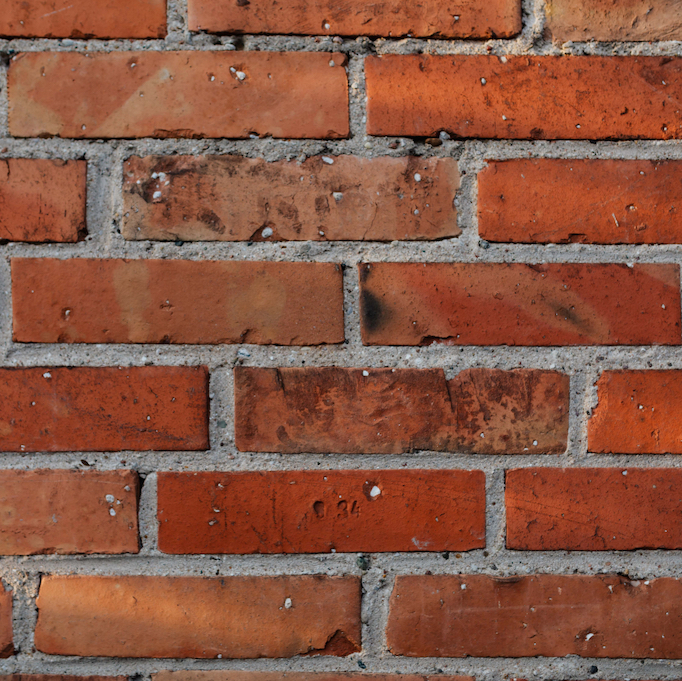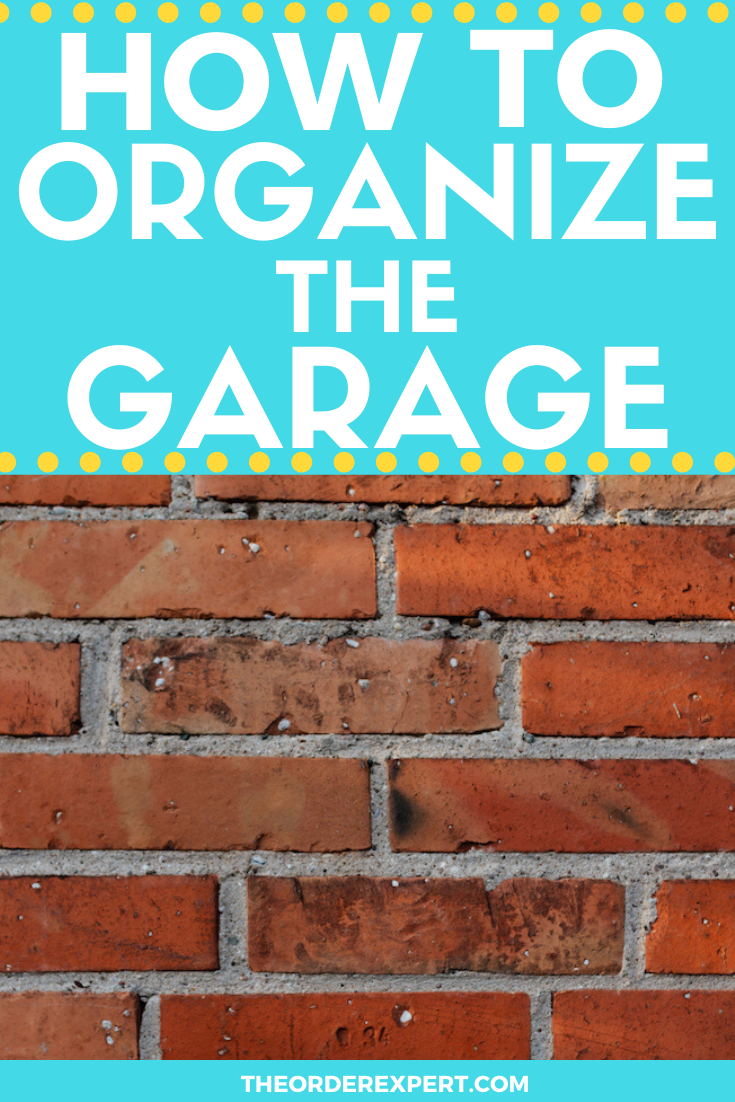
Have you been meaning to organize the garage at home?
Are you looking for tips on how to organize items in a logical and thoughtful way?
It’s no secret garage organization ranks as one of the top organization projects.
And it’s no wonder, since space in a garage seems like, well, free space!
A garage may be small enough to house a bicycle or motorcycle and large enough to house two cars or more.
But just because there’s tons of available space doesn’t mean you should fill that space to the brim with your belongings.
In this post, I offer several practical tips to help you organize a garage.
Because organizing a garage can be such a large project, it’s worth investing substantial time, energy, and effort planning your project before you even lift a finger.
Remember, the point here is to keep your garage neat and tidy throughout the entire year.
How to Start Organizing
Unsure as to where you should begin when it comes to organizing your garage? You’ll want to spend some time planning and preparing your project.
Doing so will drastically increase your chances of successfully cleaning out and organizing your garage. Taking the time to plan your work may will set your garage up for organization success now and in the years to come.
Make a solid plan.
Before you open that garage door, you’ll want to identify how you’d like to use your garage in future.
Would you like to store your car, bicycle, motorcycle, or other motorized vehicle in your garage?
Perhaps you’d like to store items such as hand and power tools, household supplies, sports equipment, lawn equipment, or any other materials related to your home, hobbies, or family’s activities.
Take a moment to envision how you’d like to use your space in your mind’s eye. Jot down any notes or ideas you have in a notebook or in a note-taking app.
Here are some items commonly stored in garages:
- A car or two (this may seem obvious, but it’s not always at the top of everyone’s mind!)
- Bicycles
- Car maintenance supplies
- Lawn equipment
- Yard equipment
- Sports equipment
- Small hand-held tools
- Powertools
- Gardening tools
- Home maintenance supplies
- Overflow of dry and non-edible household goods
- Seasonal items, such a summer toys, winter shovels and the like
Prepare a work schedule.
Your next step is to create a garage work plan.
Generally speaking, it’s a good idea to refrain from late-night decluttering binges or harried organization sessions before leaving for work in the morning.
Your work schedule should be solid; it should allow you to identify items, sort materials, and wrap things up until your next session.
You can schedule a few hours of work on a free day, during the weekends, or any other time where you have the ability to concentrate on the task at hand.
Take it slow.
There’s no rule that says you must organize an entire garage in a single afternoon or weekend. And it’s probably not a good idea to even consider undertaking such a large project in this manner!
Pace yourself and take your time. Consistency is more important that doing things in a slap-dash manner. Follow your plan, and work carefully and slowly.
Keep ample notes.
It’s a good idea not to leave anything to chance when it comes to garage organization. Take ample notes of your work progress using a notebook, note-taking app on your phone, or a standard memo pad.
You can mark down your goals for your current organizing session, what you accomplished, where items are stored, and your plans for future sessions.
Check the weather.
It helps to organize a garage when the weather is fairly decent. You’ll be able to remove items from the garage with ease and you’ll have enough room outdoors to sort items.
What’s more, bright light, dry air, and moderate temperatures will make the entire process more comfortable. Keep an eye on the weather as you plan your sessions so you can make the most out of fair weather.
How to Organize a Cluttered Garage
Organizing a cluttered garage may seem like an impossible task at first. But by taking short steps on a consistent basis, you can declutter, sort, and organize items.
Don’t forget this all-important truth: it took time for a garage to become cluttered, and it will take time for it to become uncluttered.
Here are some things you’ll want to have on hand before you get started with your decluttering session:
- An area set aside for trash. This is for any items to be thrown away during the course of your work. You can set up a trash can with a trash bag or have several loose trash bags on hand.
- An area set aside for recycling. This is for paper, metal, plastic, and other items that can be recycled. You can use recycling bins, containers, or boxes or use loose trash bags to store items.
- An area set aside for items you wish to keep. This is for items you definitely know you want to keep. This may include such items as lawn equipment, hand tools, car maintenance items, and the like.
- An area set aside for items to give away/return. This optional area can be quite handy during the decluttering process. It’s perfect for those items in good working condition that you no longer have a need for, or for those items borrowed from a friend and neighbor.
Now that you’ve got the basics set up, it’s time to start organizing! You can follow this process to organize items in your garage:
Group similar items together.
Begin by assembling similar items with one another. You can think of this stage like a giant game of match-up.
Gather items that look alike or have a similar purpose. For instance, yard care items will go together, as will sports equipment, and hand-held tools.
The idea behind this is so you can gain a better knowledge of what is sitting in your garage.
There’s no need to overly concern yourself with the organization of these items just yet; you’ll attend to things in just a little while. In the meantime, focus on grouping similar items together.
Process each group of items one at a time.
Once you’ve assembled items into groups, it’s time to carefully evaluate what’s actually sitting inside each group. You’ll be working through items, one at a time, and deciding whether or not to keep the item.
Here are some garage-related decluttering questions you can ask yourself:
- Do I use this item frequently?
- Does this item work as-is?
- Does this item need to be repaired?
- Is this item broken or otherwise too far gone?
- Do I like this item?
- Does this item belong to me?
- Do I really have use for this item in my home?
- Do I have ample space to properly store this item?
- Do I want to keep this item?
- Will I truly use this item in future?
Once you’ve decided whether or not to keep the item, you’ll want to place it in one of the areas we described above (trash, recycling, keep, give away/return).
And yes, in case you were wondering, you’ll want to repeat this process for all items in your garage. Yes, it will take time, but the results will be well worth it.
Take a look at what remains.
Once you’ve finished processing all materials in the garage, you’ll want to conduct a thorough evaluation of what’s left. Are you content with the items you wish to keep? Are you happy with the amount of items that remain?
If you’re not content with the items or amount of items that remain, you’ll want to go back to the above step and whittle down your collection some more.
How to Organize Your Storage
The process of organizing garage storage is similar to that of organizing any other room or area of the home. The key is to plan out your storage solutions ahead of time so you can locate items with ease.
You’ve got a lot of leeway here when it comes to determining where items should be stored. When in doubt, consider your future self: does your organization plan make it easy for yourself to retrieve items when you need them?
Identify specific storage areas for items.
It’s extremely important to identify exactly where you’d like to store items in your garage. This way, you can maintain the organization structure you’ve created for months to come.
The process is as simple as declaring a certain area as such. For instance, you may designate one corner of your garage an area for tools, another for sports equipment, and another for yard maintenance supplies.
Store like items with like.
Take care to store similar items with similar items in your garage.
It’s best to think in terms of major groupings, such as lawn tools with lawn tools, home maintenance essentials with home improvement essentials, baseball sports equipment with baseball sports equipment, and the like.
This way, you’ll know exactly where to look for a lawn rake, a baseball bat, or a handful of trash bags.
Keep frequently used items within easy reach.
You should be able to easily access frequently used items in your garage. This goes for your car or any other motorized vehicle. You should have ample room in your garage in which to park, enter, exit, and maintain your car.
Likewise, items stored around the periphery of your garage should be relative to their use during the year.
For instance, you may find it helpful to store items near the house door or door to the garage for frequently used seasonal items, such as shovels, or hand tools.
Carefully contain small items and make room for large items.
Small frequently used items, such as nuts or bolts, or small hand tools, should be kept together.
Ideally, you’ll want these items at or around hand/eye level so you’ll have easy access to these tools as you need them. You can store items in uniform containers, jars, boxes, as necessary.
Large or heavy items should be grouped together and should have sufficient space above, below, and around so you can remove items without fear of injury to yourself or damage to the item in question.
Practice regular maintenance.
Haphazardly placing items into the garage won’t organize it; you must spend a few brief moments at a time to keep things neat and tidy.
Keep your garage properly maintained by returning items to their specific storage location. You can make this maintenance part of your regular activities during the week.
Return that rake back to it’s storage location once you’ve finished raking the leaves and lawn clippings and return that hammer back to the tool box after setting a sticky floorboard.
Don’t forget to return that snow shovel to the garage once the winter season has come to an end.
Smart Garage Storage Solutions
What’s the cheapest way to organize a garage?
It’s to have a clear plan, have a dedicated organization system, and utilize items you already own. Garage storage solutions don’t have to break the bank.
In fact, you may have several of these items in your home or on your property that could be put into immediate use for storage:
- Large containers or bins
- Packing crates or boxes
- Long plastic tubing
- Chests, dressers, or vanities
- Upright storage metal wall units
Here are some other storage ideas to take into consideration:
- Upright storage shelving. This is useful for storing small to medium sized items that stand alone by themselves. You can shelve boxes, containers, or smaller items that do not require an exterior storage unit.
- Vertical storage. This is useful for items that are long and lean and narrow. Think brooms, shovels, fishing rods, poles, or anything with a long handle.
- Peg boards. You can customize peg boards to your heart’s content to create a unique storage layout. Trace the outline of tools or equipment so you know exactly where to replace items when you’re finished using them.
- Cabinets, chests, and drawers. This is useful for storing similar items such as tools, hobby materials, crafts items. You can designate individual drawers or dedicate an entire unit for items.
- Mesh bags and containers. This is useful for items that are lightweight in nature. Think items such as balls, fabrics, paper goods and the like.
How to Maximize Garage Space
Maximizing garage space is similar to maximizing spaces around the home with limited floor space, such as closets and bathrooms. The idea is make use of all available space in the garage area…not just the floor you walk on.
And if you’re really short on space, this might be a good time to back to the beginning and be honest about how much space you have and how many items you can reasonably, and comfortably, fit into that space.
Here are some garage space ideas to keep in mind:
Store items vertically.
Vertical storage makes use of otherwise “dead” storage space in the garage. Use this to your advantage and store items along walls and upright in corners.
Take care when thinking about vertical storage; you don’t want to unnecessarily overload a space with too many items that will potentially weigh down or endanger the vertical storage solution.
Some ideas include mounted wall racks or storage containers for lawn tools, and shelving or wall storage smaller items such as handheld tools.
Contain items in similar sized containers.
Make the most of any space by storing similar items in similar sized containers. Having this type of conformity will allow you to store items in bins next to one another in a streamlined fashion. What’s more, you’ll be able to physically move items if they are of similar height, width, and weight.
Look into ceiling storage solutions.
Depending on the size, shape, and layout of your garage, you may be a candidate for ceiling storage. Ceiling storage can be used to house fishing rods, sports equipment, camping equipment, and the like.
Do some online research online into ceiling storage options and consider storage kits and setups at your neighborhood home improvement center.
How to Keep Your Garage Clutter-Free
Congratulations! You’ve successfully decluttered, organized, and found appropriate storage solutions for your garage. You may think your hard work is over, but the truth is your work has just begun.
Keeping your garage free of clutter doesn’t have to be a drawn-out activity. By spending just a few minutes every time you interact with your garage, you can keep things neat and tidy.
Keep the purpose of the garage at the top of your mind.
It may sound a bit silly, but you should keep the purpose of the garage at the very top of your mind. Remember, your garage is a place to store your car when not in use.
Can you fit your car inside the garage without fear of knocking over items, bumping into things, or potentially harming yourself or others when entering or exiting the car?
Thinking about things in this manner will help prevent future clutter, debris, and household items from entering the garage. If you cannot comfortably and safely store your car in your garage, then it’s not a clutter-free environment.
Replace items in their proper storage area.
Get in the habit of returning items to their proper storage areas whenever you are finished using them. This should become a non-negotiable task. This action must be factored into your regular activities.
It’s as easy as replacing your woodworking tools in their storage place after building a table or returning the lawn mover to the garage after mowing the lawn. Five minutes of work will save you five hours of decluttering in future!
Clearly identify clutter.
It’s worth identifying what actually belongs in the garage…and what’s clutter. You can do this by making a quick list of items that truly belong in the garage.
Another option is to immediately take a series of photos of your garage after you’ve organized everything. If you’re ever in doubt as to whether or not something belongs in the garage, take a look at your list or photos.
If the item belongs, leave it. If it doesn’t, remove it immediately.
Carefully plan future purchases.
If you’re considering purchasing a large item for the home to be stored in the garage, ask yourself, “Do I have ample storage for this item?”
Avoid assuming you have the space, otherwise you’ll end up exactly back where you began!
Visit the garage for an honest assessment of storage availability and capacity. Measure space dimensions, scrutinize storage options, and consider how your new purchase is going to affect your current garage setup.
If you’re short on space, you may want to think twice about purchasing the item at the present moment.
If your heart is still set on purchasing the item in question, and you’re short on space, strongly consider removing items you no longer use or have use for in your garage.
You’ll be finally free of those unused items and you’ll have the space you need for your new purchase.
Put trash in the trash, and not the garage.
Your garage isn’t a trashcan. It is a garage.
If you’ve accumulated any amount of trash, garbage, recycling, or some other bit of stuff in your travels, don’t blindly dump it in the garage because “you don’t know what else to do with it.”
Make firm decisions about which household or yard items you’ll keep, and what to toss.
Hundreds of these tiny decisions over the course of a year can quickly turn your newly-organized garage into a mess.
If you’re not going to keep the item in question, place it out for trash collection or recycling collection as necessary.
How about you? Are you going to organize your garage in the near future? What types of items will you store in your garage? Join the conversation and leave a comment below!






0 Comments